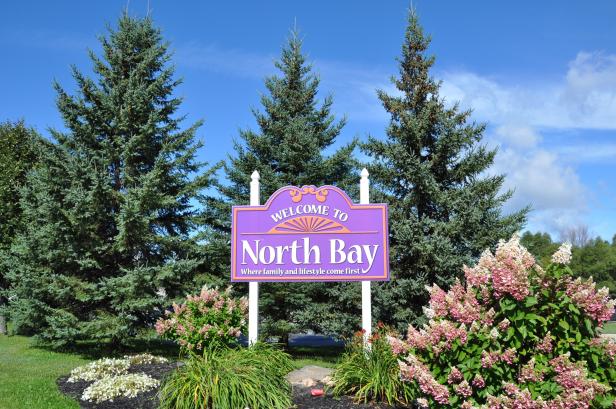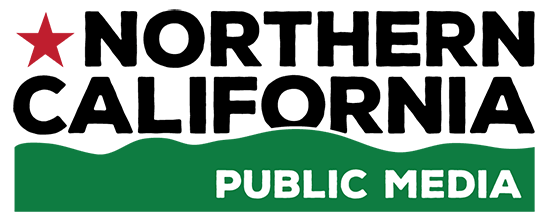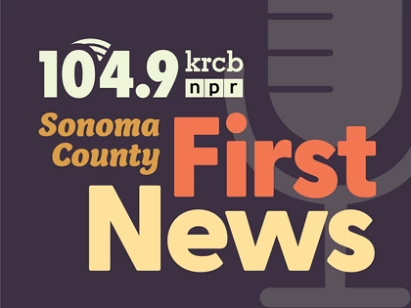 photo credit: Shutterstock
photo credit: ShutterstockA new study reveals the economic contributions of undocumented immigrants in California and models potential impacts of mass deportations in the North Bay. KRCB's Shandra Back sat down with Bay Area Council Institute vice president of research Abby Raisz to explain the impact behind the data.
SHANDRA BACK: Let's start out with some context. How central is immigrant labor to California's economy, and how does that play out more locally here in the North Bay?
ABBY RAISZ: Sure. We started this study to really get a sense of the contributions that immigrants make to the statewide economy and different regional economies throughout the state. We expected to find that they were important. I don't know if we were expecting to see the results that we found, which is that they're disproportionately essential to various sectors in the economy.
Agriculture and construction are two that I think most people would expect. But things like food service, accommodation, manufacturing—so many other sectors are touched by immigrant labor. Even those with lower concentrations of immigrant labor are still part of this larger ecosystem that is how an economy works.
BACK: Thinking about this economic ecosystem as a whole for California, how does the makeup of the immigrant population in the North Bay compare to the rest of the state? And do we know what share of that population is undocumented?
RAISZ: In the North Bay, immigrants as a share of the entire population is a bit lower than, say, the Bay Area as a whole or the Los Angeles region. But when we look at undocumented immigrants as a share of total immigrants, that's when we see the North Bay tick up.
 source: U.S. Census ACS 2023 1-Year Estimates. Analysis: Bay Area Council Economic Institute. Regional boundaries in this table are based on
source: U.S. Census ACS 2023 1-Year Estimates. Analysis: Bay Area Council Economic Institute. Regional boundaries in this table are based on the California 100 framework except for the North Bay.
Immigrants and undocumented immigrants as a share of regional populations, 2023
BACK: What kinds of jobs are undocumented immigrants working in here in the North Bay, and is that different than in other parts of California?
RAISZ: Basically the entire tourism economy: accommodation and food services, arts, entertainment and recreation. That's where the North Bay would be disproportionately affected.
When we zero in on occupations, not just sectors, the number one worker that would be most affected is an agricultural worker in the North Bay. That is significantly higher than the statewide average. Across California, about 33% of agricultural workers are undocumented. In the North Bay, it's 40%. So while the total number is smaller, because it's just a subset of the state, that share is much higher. We would see a much larger impact in the North Bay when we look at those farm workers.
BACK: How do these industries—food service, accommodation, arts and culture—shape the North Bay’s economy overall? What's at stake?
RAISZ: There’s not going to be enough labor to fill those positions and make it cheap or affordable for people to do those things. What happens then? Prices go up.
There’s a cost of fear happening too. When you think there might be a work site raid near you, you’re fearful for your employees who might be undocumented. You don’t want them to be subject to a potential raid, so you might close preemptively.
I think that’s the part our study really enforced and reinforced: you don’t have to be an immigrant or undocumented to feel the adverse effects of increased immigration enforcement.
We are all consuming in the same economy together. Whether or not you agree with it or like it, a lot of the prices you see at the grocery store or at the businesses you patronize are those prices because of undocumented workers. When you remove those workers from the labor supply, you end up with a potentially higher inflation situation.
We saw that happen with the price of eggs, that was avian flu-related, but think about that and apply it to a much larger portion of agricultural commodities across the state. California produces two-thirds of the fruits and nuts in the country and a third of the vegetables. Think about all of those commodities and the prices that could rise when farms are raided and farm workers are living in fear. They might not show up to work, or if they’re deported, that’s a really difficult worker to replace.
 source: Author’s calculations of U.S. Census Bureau ACS 2023 1-Year data Analysis: Bay Area Council Economic Institute
source: Author’s calculations of U.S. Census Bureau ACS 2023 1-Year data Analysis: Bay Area Council Economic InstituteTop 10 occupations by number of undocumented workers, shown as share of total, 2023
BACK: Can you contextualize and explain what the potential effects would be of mass deportations in California, and specifically in the North Bay?
RAISZ: We found these would be catastrophic impacts—up to 9% of the whole state’s GDP. That’s not a small number. Nine percent might sound small, but California has the fourth-largest GDP in the world if it were its own country. That 9% is equivalent to the entire GDP of Nevada or Oregon. And that’s just from undocumented workers’ contributions to the economy.
BACK: What kind of local or state programs could best support immigrant workers here in California and in the North Bay?
RAISZ: There are a number of bills that could really push the needle. Some are centered around agriculture, which would really affect the North Bay—like the Farm Worker Modernization Act. Under that bill, undocumented workers could gain temporary legal status, which would reduce the risks of labor shortages that ultimately drive up food prices for everyone.
It would also modernize the H-2A visa program, which has historically allowed agricultural workers to come in and work seasonally. But it’s very costly for employers and not year-round. This bill would expand access. So if I’m in Sonoma and I own a vineyard, I could use this program to hire someone year-round. That could be a really good way to stabilize the farm workforce and the agricultural sector.
BACK: That’s Abby Raisz with the Bay Area Council Economic Institute. Abby, thank you so much for joining us today.
RAISZ: Thanks for having me.

 Live Radio
Live Radio




